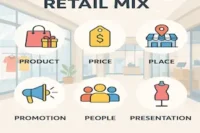RPI Explained in Simple Words: How Prices Rise and Why It Matters
Published: 29 Jun 2025
Have you ever looked at your grocery bill and thought, “Why is everything getting so expensive?” That’s where the Retail Price Index comes in.
It helps explain how prices change over time. But what exactly is it, and why should you care? Let’s break it down in simple words.
So, let’s dive in
What is the retail price index (RPI)
The Retail Price Index (RPI) is a number that shows how the prices of everyday items change over time. It tracks things people usually buy, like food, clothes, rent, fuel, and travel.
By comparing prices from month to month or year to year, RPI helps show if the cost of living is going up or down. Governments, companies, and landlords use it to adjust salaries, pensions, and rents.
- The Retail Price Index (RPI) shows how prices of common things change over time.
- It includes items like food, clothes, rent, transport, and fuel.
- It compares today’s prices to those in the past to measure inflation.
- It helps track changes in the cost of living.
- Used by businesses and governments to adjust pay, pensions, and rent.
Importance of (RPI)
The Retail Price Index (RPI) is important because it shows how the cost of everyday items changes over time. It helps people understand inflation and how it affects their expenses.
Governments use RPI to adjust pensions and benefits. Businesses use it to review salaries. Even landlords and banks use it to update rent or interest rates. In simple words, RPI helps everyone keep up with rising prices.
- The Retail Price Index (RPI) plays a big role in daily life. Here’s why it matters:
- Tracks inflation – Shows how prices change over time.
- Helps set wages – Companies use it to adjust pay.
- Used for pensions and benefits – Governments follow RPI to update support.
- Affects rent and loans – Landlords and banks use it to make changes.
- Supports smart planning – Helps people and businesses manage costs.
How RPI works
The Retail Price Index (RPI) is based on a basket of goods and services that people often buy, like food, clothes, transport, and rent. This basket is updated from time to time to match what people spend money on.
To find the RPI, prices of these items are collected every month. Then, these prices are compared with what they were in the past. The average price change is calculated, and that number becomes the RPI. It shows whether prices are going up or down.
How is (RPI) calculated
The Retail Price Index (RPI) is calculated by checking the prices of everyday items like food, rent, fuel, and transport. These prices are collected every month.
Then, they are compared to the prices from before. Each item is given importance based on how much people spend on it. After that, an average is found to show how much prices have gone up or down. This final number is called the RPI.
Pros and Cons of (RPI)
Like any system, the Retail Price Index (RPI) has its good and bad sides. It helps track price changes, but it’s not perfect. Let’s look at its pros and cons.
Pros
- Simple to understand – The concept is easy for most people to follow.
- Tracks long-term trends – RPI has been used for many years, making it helpful for comparing past and present inflation.
- Used for adjusting incomes – Many pensions, wages, and contracts are linked to RPI, helping people keep up with rising costs.
- Includes housing costs – Unlike some other indexes, RPI covers mortgage interest and other housing-related expenses.
- Helps in budgeting – People, businesses, and governments use it to plan for future price changes.
Cons
- Less accurate than CPI, RPI is seen as outdated and less reliable for measuring inflation today.
- Often overstates inflation – It can show higher price increases than people experience.
- Not everyone spends the same. The basket may not match all household spending habits.
- Old methods used – Some of the formulas and data sources are considered out of date.
- Losing importance – Many countries and experts now prefer using the Consumer Price Index (CPI) instead of RPI.
CPI vs RPI
Both the Consumer Price Index (CPI) and the Retail Price Index (RPI) are used to measure inflation, which means how prices change over time. But they are calculated differently and include different items. Which are listed below.
CPI ( Consumer Price Index )
- Tracks the average change in prices of goods and services that people usually buy
- Does not include mortgage interest or housing costs
- Used by most governments and economists today
- Considered more accurate and modern
- Commonly used to set interest rates and guide economic policies
RPI ( Retail Price Index )
- Measures price changes in everyday items like food, clothes, and fuel
- Includes housing costs like mortgage interest and council tax
- Older method, still used for adjusting some pensions and rents
- Tends to show higher inflation than CPI
- Less common now, but still used in contracts and wage agreements
Conclusion
So, guys, in this article, we’ve covered the retail price index in detail. Knowing how prices change is important for everyone, not just experts.
I suggest checking RPI updates every few months to see how it affects your daily expenses. If this helped you, go ahead and bookmark this page or share it with your friends and family!

- Be Respectful
- Stay Relevant
- Stay Positive
- True Feedback
- Encourage Discussion
- Avoid Spamming
- No Fake News
- Don't Copy-Paste
- No Personal Attacks



- Be Respectful
- Stay Relevant
- Stay Positive
- True Feedback
- Encourage Discussion
- Avoid Spamming
- No Fake News
- Don't Copy-Paste
- No Personal Attacks


